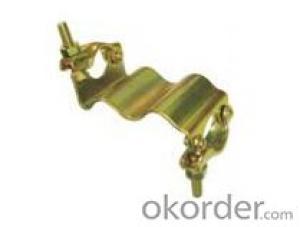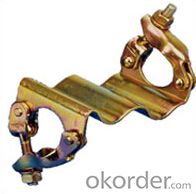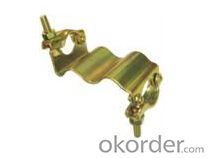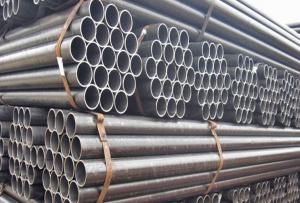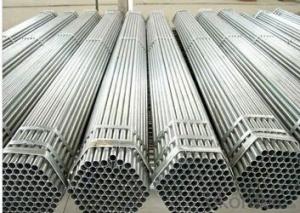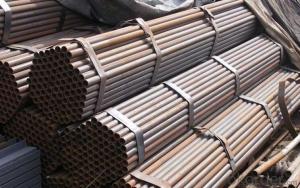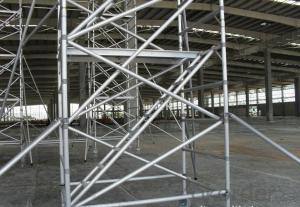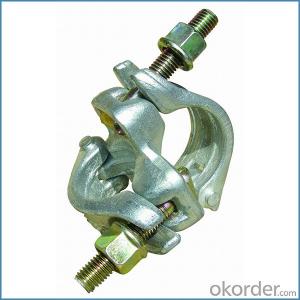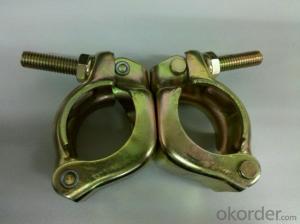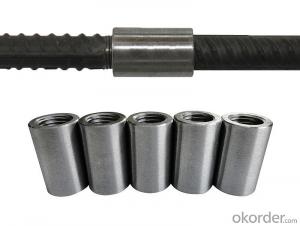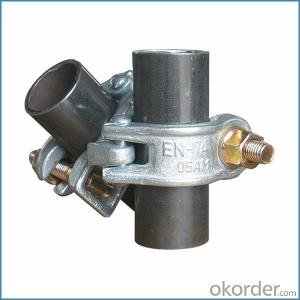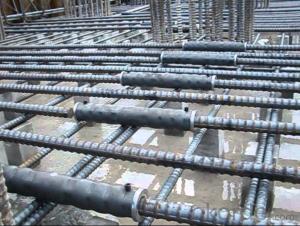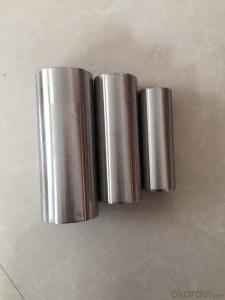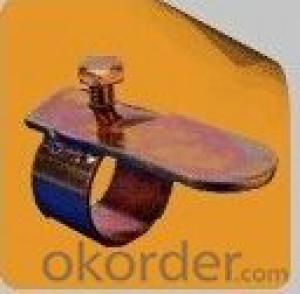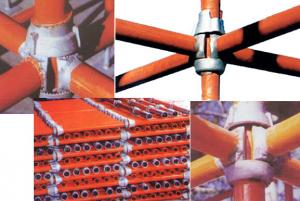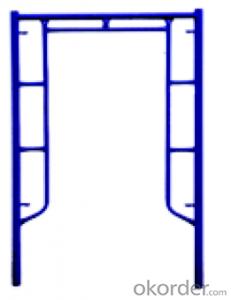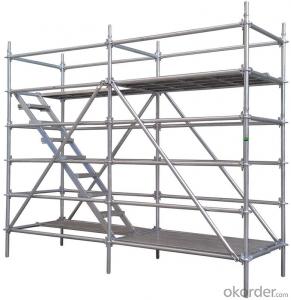Scaffolnding Steel Tube Type Roofing Coupler
- Loading Port:
- China Main Port
- Payment Terms:
- TT OR LC
- Min Order Qty:
- -
- Supply Capability:
- -
OKorder Service Pledge
OKorder Financial Service
You Might Also Like
Quick Details
| Place of Origin: | Model Number: | ||||
| Type: | Material: | Size: | |||
| Surface Treatment: | Standard: | Weight: |
Packaging & Delivery
| Packaging Detail: | bags then on steel pallets or as your request. |
| Delivery Detail: | according to the order quantity |
Specifications
Roofing Coupler
1. BS1139/EN74 -1.
2. Clear marking.
3. Perfect surface.
4. Timely delivery.
1. Description of Roofing Coupler
Material | Q235/Q345/etc |
Dimensions | 48.3*48.3 or as your demands |
Surface | Hot-dip galvanization/ electro galvanization /painted /or as your request |
Standard | EN74,BS1139, |
Fastener Grade | class8.8 |
Weight | 1.2kg/ as your requirement |
Feature | 1.Good bearing capacity 2.Durable & stable |
Note | OEM service is available |
MOQ | 1000pieces |
Package | woven bags with steel pallets, or as your request |
Payment Terms | TT, L/C, or as our agreement. |
Delivery Time | According to order quantity. |
- Q: Are steel tube couplers easy to assemble and disassemble?
- In general, steel tube couplers prove to be easily assembled and disassembled. Their purpose is to establish a dependable and firm linkage between two steel tubes, facilitating effortless connection and separation when necessary. The process of assembling typically entails inserting the tubes into the coupler, tightening the fasteners, and guaranteeing a snug fit. Dissassembling the coupler follows a similar uncomplicated procedure, involving the loosening of fasteners and removal of the tubes. All in all, steel tube couplers present a practical and effective resolution for the joining and separating of steel tubes in diverse applications.
- Q: Its been up for 8 months! He hasn't been on the job site in over 6 months. He said he wasn't coming over today to remove scaffolding because the MHIC advised him to seek counsel. What does getting a lawyer have to do with getting his tools? What recourse do we have to get his property off our property? We already sent him a certified letter to remove the items. Does it become considered abandoned at some point?
- You fired your contractor. Did you sign a contract to have work done on the porch? Read it and maybe that will tell you why he is seeking counsel. Is there something in the initial contract which you both signed stating something about you not being able to fire him? 8 months ? He is obviously not in high demand otherwise the equipment would have been needed elsewhere. Nobody has a ton of equipment that they can leave it all over the place. Otherwise not only can you not only put up a for sale sign(and city hall will know this stuff), treating it as abandoned.; you probably can get him on a charge of Littering on your property. Around my parts it is 2G minimum. If you hurt yourself on his scaffolding or the neighbor kid does, can you say law-suit? Then again somebody came during the night and stole it. And you can charge him a storage fee as any storage facility does.
- Q: How do steel tube couplers ensure the alignment and stability of scaffolding tubes?
- The alignment and stability of scaffolding tubes are primarily ensured by steel tube couplers, which are designed and constructed for this purpose. These couplers securely connect and hold the tubes together, creating a rigid and stable structure. Alignment is achieved through the precise dimensions and tolerances of steel tube couplers. They are manufactured with high accuracy to fit tightly around the tubes they connect. This tight fit eliminates gaps and movement between the tubes, keeping them aligned in the desired position. Steel tube couplers also provide a strong and secure connection between the scaffolding tubes. They are made from high-quality steel, ensuring excellent strength and durability. This construction allows the couplers to withstand heavy loads without deforming or failing. To enhance stability, steel tube couplers often include additional features. Some have locking mechanisms or bolts that further secure the connection between the tubes, preventing accidental dislodgment or movement. The design of steel tube couplers allows for easy and quick assembly and disassembly of scaffolding. This ease of use ensures efficient maintenance of tube alignment during construction. It also enables easy adjustment or modification of the scaffolding without compromising stability. Overall, steel tube couplers are crucial for ensuring the alignment and stability of scaffolding tubes. With their precise dimensions, strong connection, additional stability features, and ease of use, these couplers provide a reliable and secure solution for constructing safe and stable scaffolding structures.
- Q: Do steel tube couplers require any special tools or equipment for installation?
- Yes, steel tube couplers typically require special tools or equipment for installation. These may include wrenches, torque wrenches, pipe cutters, and pipe threading machines, depending on the specific coupler and installation requirements.
- Q: Can steel tube couplers be used in scaffolding projects with complex geometries?
- Indeed, complex scaffolding projects can benefit from the utilization of steel tube couplers. These couplers possess a remarkable adaptability, enabling the connection of tubes at various angles and positions, thus facilitating the construction of intricate scaffold structures. Designed to ensure robust and secure connections, these couplers guarantee the stability and safety of the scaffolding system, even in the face of complex geometries. Furthermore, installing steel tube couplers is a straightforward task, and they can be effortlessly adjusted and repositioned as necessary, making them ideal for accommodating the evolving demands of intricate scaffolding projects.
- Q: Can steel tube couplers be used in scaffolding projects with multiple levels?
- Yes, steel tube couplers can be used in scaffolding projects with multiple levels. Steel tube couplers are commonly used in scaffolding systems to connect and secure steel tubes together. They provide a strong and reliable connection, making them suitable for projects that require multiple levels of scaffolding. By using steel tube couplers, the scaffolding structure can be easily assembled, dismantled, and adjusted to accommodate different levels and heights. Additionally, steel tube couplers are known for their durability and load-bearing capacity, which ensures the safety and stability of the scaffolding system.
- Q: What are the typical weight limits for steel tube couplers?
- The typical weight limits for steel tube couplers vary depending on the specific type and design of the coupler. However, in general, steel tube couplers can typically handle loads ranging from a few hundred pounds to several thousand pounds. It is essential to check the manufacturer's specifications and guidelines for accurate weight limit information for a particular steel tube coupler.
- Q: Are there any specific guidelines for the safe use of steel tube couplers in scaffolding near heavy machinery or equipment vibrations?
- Yes, there are specific guidelines for the safe use of steel tube couplers in scaffolding near heavy machinery or equipment vibrations. These guidelines typically include ensuring that the couplers are properly secured and tightened, inspecting them regularly for any signs of damage or wear, and using additional measures such as vibration isolation pads or shock absorbers to minimize the impact of vibrations on the scaffolding structure. It is important to follow these guidelines to maintain the integrity and stability of the scaffolding and ensure the safety of workers in such environments.
- Q: How do you ensure proper tightening and torque of steel tube couplers on scaffolding tubes?
- In order to achieve proper tightening and torque of steel tube couplers on scaffolding tubes, it is crucial to adhere to the following procedures: 1. Select an appropriate torque wrench: Begin by choosing a torque wrench that is suitable for the size and type of steel tube couplers in use. It is vital to ensure that the torque wrench is accurately calibrated and in good working condition. 2. Verify compatibility: Prior to attaching the couplers, confirm that they are the correct size and type for the scaffolding tubes being utilized. Check for any compatibility issues or manufacturer recommendations. 3. Clean the threads: Before connecting the couplers, make certain that the threads on both the couplers and scaffolding tubes are clean and free from dirt, rust, or debris. This step will help guarantee a secure and proper connection. 4. Apply lubrication: Administer a small amount of lubrication, such as light oil or grease, to the threads of the couplers. This will aid in reducing friction and facilitating easier tightening of the couplers. 5. Hand tighten: Initiate the tightening process by manually tightening the couplers onto the scaffolding tubes. Ensure that they are threaded on straight and avoid cross-threading. Hand tightening is crucial for establishing an initial secure connection. 6. Utilize the torque wrench: Once the couplers are hand tightened, employ the torque wrench to apply the recommended torque. The torque specification will differ depending on the size and type of couplers used, thus it is important to consult the manufacturer's guidelines or industry standards. 7. Verify the torque: After applying the torque, inspect the couplers to confirm that they are appropriately tightened. Employ a torque wrench or specialized torque-measuring tool to verify that the specified torque has been achieved. 8. Inspect for gaps or movement: Once the couplers are tightened to the specified torque, thoroughly examine the connection for any gaps or movement. The couplers should be securely fastened to the scaffolding tubes without any looseness or play. 9. Repeat the process: Repeat these steps for each steel tube coupler on the scaffolding structure, ensuring that each one is tightened to the specified torque. By adhering to these steps, you can guarantee proper tightening and torque of steel tube couplers on scaffolding tubes, which is indispensable for the stability and safety of the scaffolding structure.
- Q: Brackets Cast-in-place beam support must be used with bowl button scaffolding, can not use fastener scaffolding, there is no mandatory, or standard file requirements!
- Common points are sandwich panels, with a hard protective layer, the difference is the middle of the material is different. Polyurethane sandwich panels need to produce advanced sandwich panels continuous production line, the process for the inside and outside galvanized (galvanized) color steel plate cold forming, the middle coating of polyurethane foam from the compound. Foam sandwich panels beautiful appearance, bright color, the overall effect is good, it sets load, insulation, waterproof in one, and no secondary decoration, is a wide range of uses, especially in the construction site for temporary facilities such as office, Wall, etc., but also reflects the modern construction site of civilized construction, especially in the rapid installation and put into use, can be installed in the removable, material turnover index, there are obvious advantages, a substantial reduction in temporary construction site costs, Will be indispensable for new lightweight building materials.
Send your message to us
Scaffolnding Steel Tube Type Roofing Coupler
- Loading Port:
- China Main Port
- Payment Terms:
- TT OR LC
- Min Order Qty:
- -
- Supply Capability:
- -
OKorder Service Pledge
OKorder Financial Service
Similar products
Hot products
Hot Searches
Related keywords

